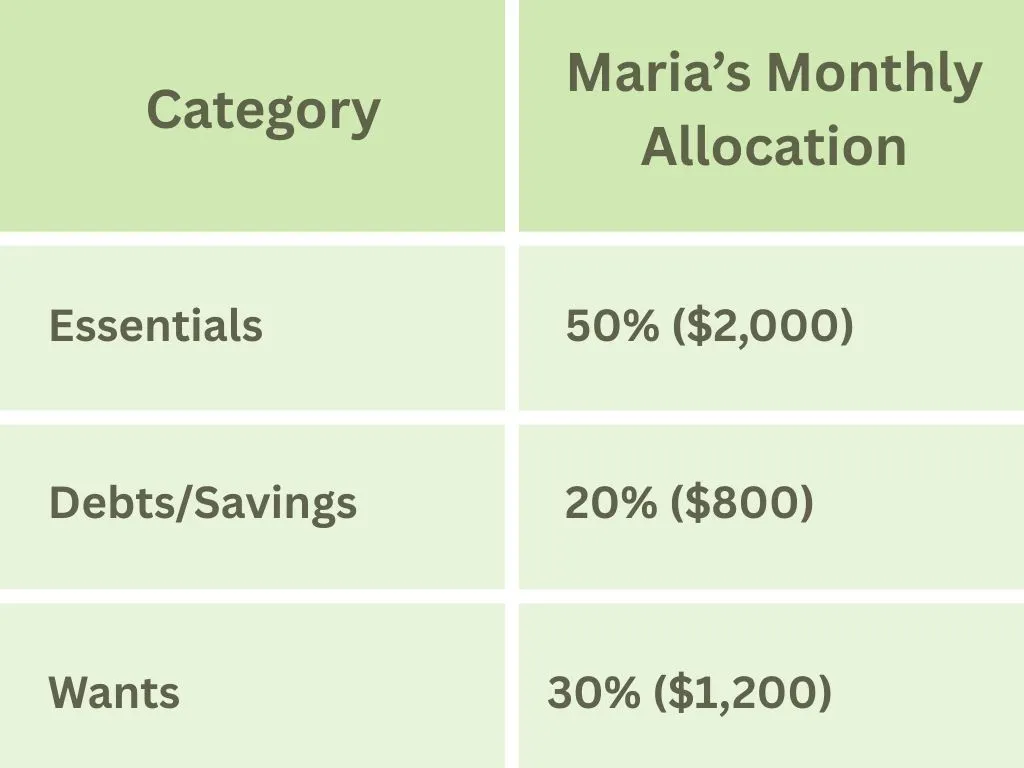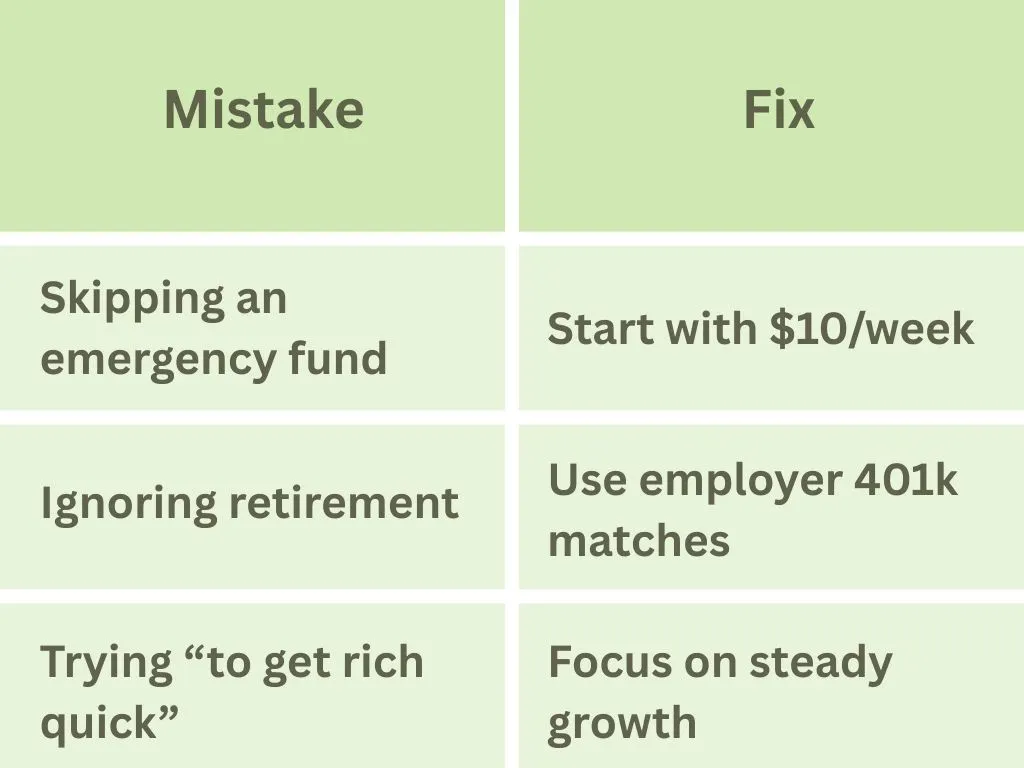How to Build Wealth From Nothing: A Step-by-Step Guide for Young Professionals
Introduction
What if you could start building wealth today—even with $0 in savings? You think that feels impossible, or a scam? Let me tell you a brutal truth: nearly 40% of Americans can’t cover a $400 emergency, according to the Federal Reserve.
But here’s another brutal truth: "wealth isn’t about how much you earn—it’s about what you keep and grow".
This guide will show you 'how to build wealth from nothing', using practical steps, smart habits, and proven strategies. Whether you’re paying off debt or starting your first job, let’s turn your financial doubts into actionable wins.

The Wealth-Building Mindset: Start Here
Building wealth begins with your mindset. Think of it like planting a tree: you need good soil (habits), consistent care (discipline), and time.
- Focus on progress, not perfection: Save $10 this week? That’s a win.
Waiting for the “perfect” moment to save or invest is a trap. Wealth isn’t built overnight—it’s the result of small, consistent actions. Saving just $10 this week might feel insignificant, but it’s a critical first step.
Think of it like training for a marathon: no one starts by running 26 miles. You build endurance one mile at a time. That creates momentum, proving you can prioritize your future. Over a year, $10 weekly becomes $520—enough to start an emergency fund or invest in a low-cost index fund. Progress beats perfection every time. Start small, stay steady, and let consistency work its magic.
- Avoid comparison traps: Your journey is unique.
Scrolling through social media or chatting with peers can make it easy to feel behind—like everyone else is buying homes, taking vacations, or hitting financial milestones while you’re still grinding. But wealth-building isn’t a race, and comparing yourself to others is like judging a marathon by someone else’s mile time. Your friend’s new car might come with a crippling loan. That influencer’s “perfect” portfolio could hide years of privilege or risk.
Focus on your numbers, your goals, and your pace. Maybe you’re paying off student debt while someone else is investing—both are valid paths. Celebrate your progress, not someone else’s highlight reel. Your journey is yours alone, and that’s where the real power lies.
- Embrace delayed gratification: Skip the daily latte; invest the savings.
Delayed gratification is choosing long-term rewards over short-term pleasures—and it’s a cornerstone of wealth-building. That daily latte might feel harmless, but over a month, it adds up to $150. Over a year? $1,825. Instead of letting that money vanish, redirect it. Invest $150 monthly in a low-cost index fund averaging 7% returns, and in 30 years, you’ll have over $183,000.
The latte isn’t the enemy—mindless spending is. Small, consistent sacrifices create big opportunities. Think of it as trading temporary comfort for lasting freedom. Every dollar you don’t spend today is a seed planted for the future you’ll thank yourself for.

Maria’s Journey: From Debt to Rental Property Owner
Maria, a 28-year-old public school teacher in Austin, Texas, faced a familiar challenge: $30,000 in student debt and a $48,000 annual salary. Feeling overwhelmed, she decided to take control. Using the 50/30/20 rule, she allocated 50% of her income ($2,000/month) to essentials like rent and groceries, 30% ($1,200) to “wants” like occasional dinners out, and 20% ($800) to debt and savings.
The Debt Battle:
Maria prioritized her highest-interest debt first—a $5,000 credit card balance at 18% APR. She cut frivolous spending, packed lunches, and took weekend tutoring gigs, adding $300/month to her debt payments. By month 10, the card was paid off. She then targeted her $25,000 student loans. Using the debt avalanche method, she paid extra toward the loan with the highest interest rate, saving thousands in interest.
Sacrifices and Strategies:
- She skipped a vacation for two years, redirecting $2,000 annually to debt.
- Rented a smaller apartment, saving $150/month.
- Negotiated a $3,000 raise by leading a school committee, boosting her debt payments.
In three years, Maria became debt-free.

From Savings to Real Estate:
With her $800/month freed up, Maria built a 6-month emergency fund ($9,600) in a high-yield savings account. Next, she saved $15,000 over 18 months for a down payment on a $150,000 condo. She house-hacked by renting out the second bedroom for $700/month, covering her mortgage. Today, the property’s value has risen to $180,000, and she nets $400/month in passive income.
Maria’s Wisdom:
“Progress isn’t about big leaps—it’s tiny, consistent steps. Every $10 saved or $50 extra paid toward debt adds up. Now, my rental property builds wealth while I sleep.”
Her story proves that with focus, frugality, and a clear plan, building wealth from nothing is possible—no six-figure salary required.
How to Build Wealth From Scratch: 5 Actionable Steps
1. Start With a Budget That Works
A budget is a simple yet powerful tool that tracks your income and expenses, acting like a financial GPS to guide your spending, saving, and investing decisions. It’s not about restriction—it’s about clarity. By mapping out where your money goes each month, you gain control over your finances instead of letting them control you.
A budget helps you prioritize essentials (like rent and groceries), tackle debt faster, and carve out room for goals like vacations or retirement savings. Without it, even high earners risk overspending, living paycheck-to-paycheck, or missing opportunities to grow wealth. Think of it as a roadmap: it won’t magically make you rich, but it ensures every dollar you earn has purpose, turning vague hopes into achievable plans.
Track every dollar for 30 days. Use free tools like Mint or a spreadsheet.

Pro Tip: Use the 50/30/20 rule to balance needs, wants, and goals.
2. Eliminate High-Interest Debt
High-interest debt—like credit cards or payday loans—is a silent wealth killer. These debts grow faster than most investments, with interest rates often exceeding 15-25%. The same goes for Personal loans and Student loans. For example, a $5,000 credit card balance at 20% APR (Annual Percentage Rate) costs you $1,000 annually in interest alone—money that could instead fund retirement savings or an emergency fund. Tackling this debt first frees up cash flow and stops the financial bleeding.
Start by listing all debts by interest rate (highest to lowest) and throw every spare dollar at the top offender. Use strategies like the debt avalanche (targeting high rates first) or debt snowball (quick wins with small balances) to stay motivated.
Maria, the teacher from our earlier example, slashed her $5,000 credit card debt in 10 months by cutting discretionary spending and adding side hustle income. Once high-interest debt is gone, you’ll reclaim hundreds—or thousands—of dollars yearly to redirect toward wealth-building. Remember: Debt freedom isn’t just a goal—it’s the foundation of financial independence.
Strategy: Try the debt snowball method—pay off smallest debts first for quick wins.
3. Build an Emergency Fund
Life is full of surprises—some delightful, others disastrous. A flat tire, a broken furnace, or sudden job loss can derail your finances overnight. That’s where an emergency fund comes in. Think of it as a financial airbag: it won’t prevent the crash, but it’ll soften the blow. Experts recommend saving 3–6 months of living expenses, but starting small is key. Aim for $500 first—enough to cover minor emergencies without relying on credit cards.
Where to stash your cash: Ditch traditional savings accounts with near-zero interest. Instead, use high-yield savings accounts (like Ally Bank or Marcus by Goldman Sachs), which offer 4%+ Annual Percentage Yield. These accounts keep your money accessible but growing faster than inflation. For example, saving $500 in a 4%/year—enough for a tank of gas or a grocery run. As your fund grows, you’ll sleep easier knowing you’re prepared for life’s curveballs while staying on track to build wealth.

4. Invest Early—Even Small Amounts
Investing early—even with small amounts—lets compound interest work in your favor. For example, $200 invested monthly at a 7% annual returns = $245,000 in 30 years, proving that consistency and time matter far more than the size of your initial contributions.
In investing, time is your best ally.
Best Starter Options:
- 401(k) with employer match (free money!)
- Roth IRA (tax-free growth)
- Index funds (e.g., S&P 500 ETFs)
5. Increase Your Income
Building wealth isn’t just about cutting costs—it’s about expanding what’s possible. Boosting your income creates more room to save, invest, and tackle debt faster. Start by auditing your skills: Could you freelance as a graphic designer on Upwork, tutor online, or drive for Uber Eats on weekends?
Maria, the teacher we mentioned earlier, added $300/month by tutoring evenings. If side hustles aren’t your style, invest in certifications (like a Google Analytics course) to negotiate a raise or pivot to a higher−paying role. Even a $5,000 annual raise, invested at 7% returns, becomes $75,000+ in 10 years.
Small steps, big impact: A $200/month side hustle could fund your Roth IRA. Platforms like Coursera or Fiverr let you monetize hobbies, from photography to coding. The key? Treat income growth as a habit. Allocate 50% of new earnings to goals (debt, investments) and 50% to guilt-free spending. More income + smart choices = faster wealth.

Tools to Accelerate Your Journey
- Budgeting: YNAB, PocketGuard
- Investing: Vanguard, Fidelity
- Education: The Simple Path to Wealth (book), Investopedia
Key Takeaways
- Start small: Save $20 this week.
- Automate savings: Set up recurring transfers.
- Invest consistently: Time beats timing.

FAQs
1. Can I build wealth with a low income?
Yes! Focus on saving percentages (e.g., 10% of income), not dollar amounts.
2. How do I start investing with little money?
Use micro-investing apps like Acorns or buy fractional shares through Robinhood.
3. Is paying off debt or saving more important?
Tackle high-interest debt first, but save $500 for emergencies ASAP.
Conclusion
Learning how to build wealth from nothing isn’t about luck—it’s about taking control. Start today: Track your spending, open a high-yield savings account, or invest $50 in an index fund. Remember, every millionaire started somewhere. Why not here?
Your Move: Share your first wealth-building step in the comments below. Let’s grow together!





